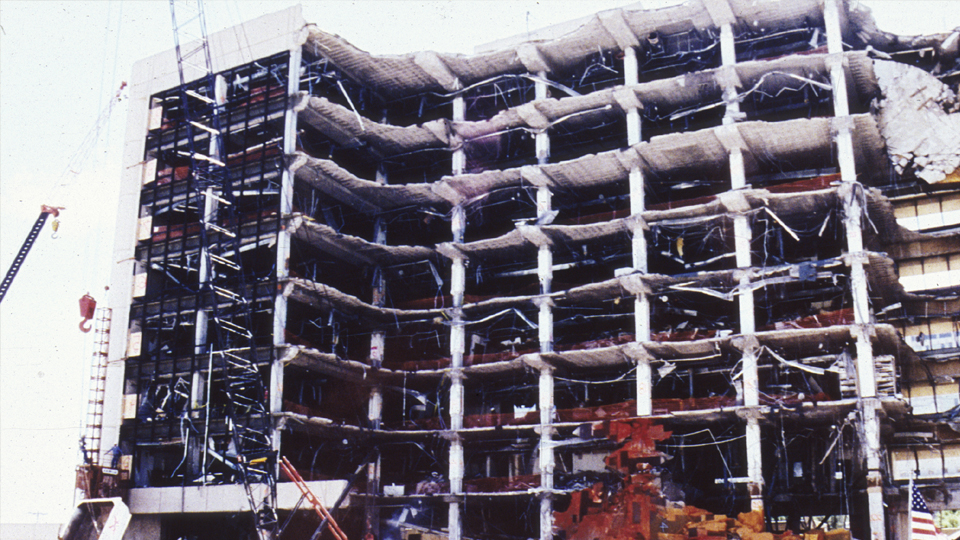The Oklahoma City bombing, which occurred on April 19, 1995, remains one of the most tragic events in American history. This act of domestic terrorism claimed the lives of 168 individuals, including 19 children, and left hundreds more injured. The event not only devastated the immediate victims and their families but also had far-reaching effects on the Oklahoma City community and the nation as a whole. This article explores the aftermath of the bombing, the community’s journey toward healing, and the lessons learned in resilience and solidarity.
The Impact of the Bombing

The bombing, executed by Timothy McVeigh and Terry Nichols, targeted the Alfred P. Murrah Federal Building. The attack was motivated by anti-government sentiment and was intended as a protest against federal policies. The immediate impact of the bombing was catastrophic:
- 168 lives lost, including 19 children.
- Over 600 individuals injured.
- Significant destruction of property, with the Murrah Building completely obliterated.
- A profound psychological impact on survivors, first responders, and the broader community.
The bombing sent shockwaves throughout the nation, raising concerns about domestic terrorism and prompting discussions about national security. In the wake of this tragedy, the city of Oklahoma faced the daunting task of recovery and healing.
Immediate Response and Rescue Efforts
In the hours and days following the bombing, the community came together in a remarkable display of solidarity and support. First responders, including firefighters, police officers, and medical personnel, worked tirelessly to rescue those trapped in the rubble and provide medical assistance to the injured. The response was characterized by:
- Over 1,100 rescue workers from various agencies.
- Emergency shelters set up for displaced families.
- Coordination with local and federal agencies to manage the crisis.
The Federal Bureau of Investigation (FBI) quickly established a command center, and the sight of search and rescue operations became a symbol of hope amid despair. While many lives were lost, the heroic efforts of first responders saved numerous others, reinforcing the community’s sense of unity in the face of tragedy.
Long-Term Psychological Effects

The psychological aftermath of the bombing was profound. Survivors, witnesses, and families of victims experienced various mental health issues, including PTSD, anxiety, and depression. The impact was not limited to those directly affected; the entire community felt the emotional toll. Studies indicate that:
- Approximately 30% of those directly exposed to the bombing experienced symptoms of PTSD.
- The event led to a significant increase in mental health issues in the region, prompting a need for widespread psychological support.
In response, mental health professionals and organizations mobilized to provide counseling and support services. The Oklahoma City Community Foundation played a pivotal role in funding mental health initiatives, ensuring that those affected had access to the resources they needed for recovery.
The Role of Memorialization

In the years following the bombing, the establishment of the Oklahoma City National Memorial and Museum became a cornerstone of the community’s healing journey. Dedicated on April 19, 2000, the memorial serves as a tribute to the victims and a place of reflection for visitors. Key features include:
- The Field of Empty Chairs, representing each victim.
- The Survivor Tree, symbolizing resilience and strength.
- The Reflecting Pool, offering a space for contemplation.
The memorial not only honors those who lost their lives but also educates visitors about the dangers of extremism and the importance of tolerance and understanding. It has become a vital part of the community’s identity and a focal point for ongoing healing.
Community Resilience and Rebuilding
As Oklahoma City began to rebuild, the focus shifted from mourning to resilience. The community demonstrated remarkable strength and unity, exemplified by various initiatives aimed at recovery and growth. Some significant efforts included:
- Community events and vigils that fostered a sense of togetherness.
- Urban renewal projects that transformed the cityscape.
- Programs aimed at promoting peace, tolerance, and acceptance among diverse groups.
Oklahoma City’s journey from devastation to renewal serves as a powerful testament to the human spirit. The community learned to embrace its shared history while advocating for a brighter future. The tragedies endured led to a commitment to preventing future acts of violence and promoting understanding among individuals of different backgrounds.
Lessons Learned: A National Conversation
:max_bytes(150000):strip_icc():focal(739x0:741x2)/oklahoma-city-bombing-2-1-2000-393e927a3b854271aa5519a97e29361e.jpg)
The Oklahoma City bombing sparked a national conversation about domestic terrorism, extremism, and the importance of community cohesion. Some essential lessons learned include:
- The necessity of vigilance against extremism in all forms, including domestic terrorism.
- The importance of mental health resources in the aftermath of trauma.
- The power of community solidarity in overcoming adversity.
In the years since the bombing, numerous initiatives have been launched nationwide to address these issues, emphasizing education, awareness, and prevention. The events in Oklahoma City served as a stark reminder of the consequences of hatred and divisiveness, prompting a call to action for individuals and communities across the nation.
Conclusion: A Journey of Healing and Hope
The Oklahoma City bombing remains a painful chapter in American history, but it also represents a powerful narrative of resilience, healing, and hope. The journey of the Oklahoma City community illustrates how people can come together to support one another in the face of unimaginable tragedy. Through memorialization, mental health advocacy, and a commitment to fostering peace and understanding, the community has emerged stronger than ever.
As we reflect on this tragedy, it is crucial to remember the lives lost, honor the survivors, and recognize the importance of unity in the face of adversity. The lessons learned from the Oklahoma City bombing continue to resonate, reminding us of our shared responsibility to promote understanding, compassion, and resilience in our communities. Together, we can work towards a future that embraces diversity and rejects violence, ensuring that such a tragedy is never repeated.